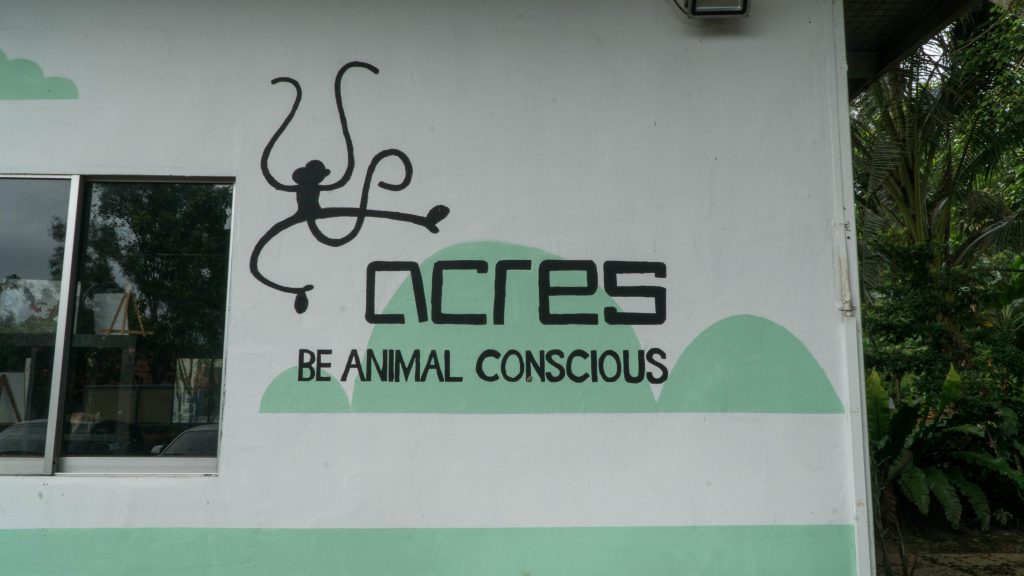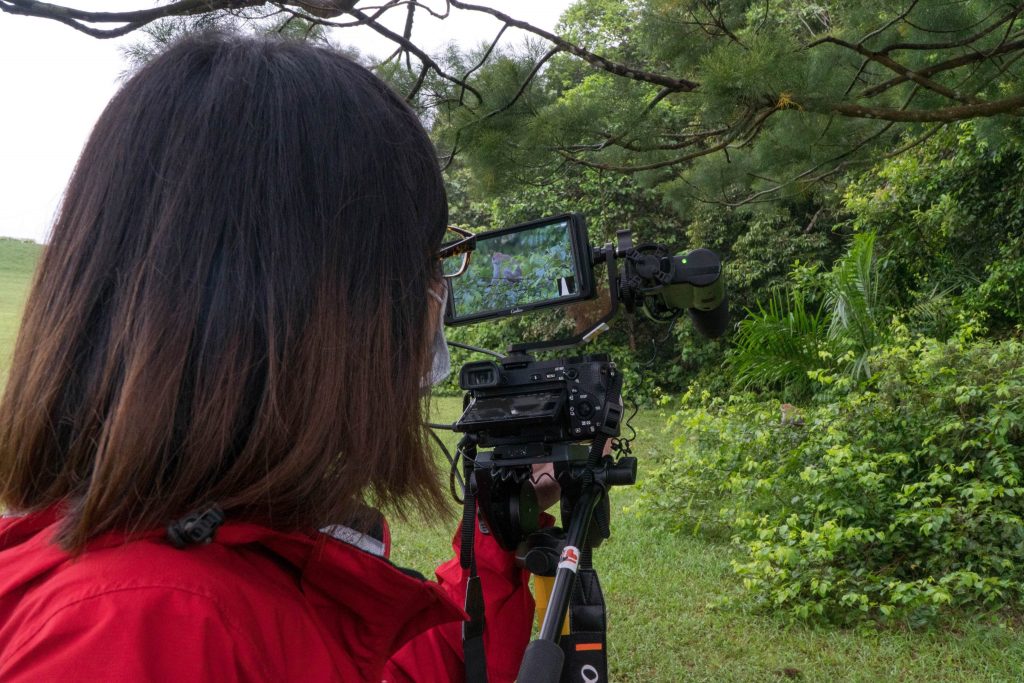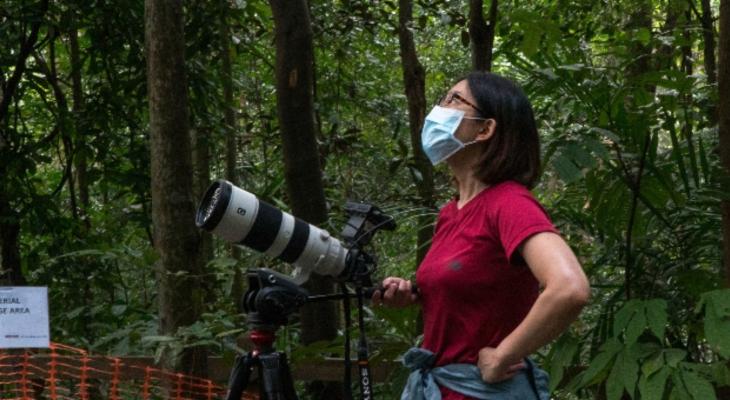My Storytelling Adventure with Monkeys in Singapore
“I would like you to go up that road past that bend and the arrow sign, and get the shot from there,” said Chris, my director, pointing ahead.
We were along old Upper Thomson Road, heading into Upper Peirce Reservoir Park in Singapore.
“Past the curve?” I repeated.
“Yes,” he confirmed.
I swallowed nervously, clutching the monopod and camera close to my body and stared at the ominous scene in front of me - what seemed like countless long-tailed macaques (or more colloquially known as monkeys) hanging out close by.
It’s only been a month since I joined Our Better World as a producer and here I am, at a park looking for macaques to film a story in collaboration with Animal Concerns Research & Education Society (ACRES).

Our mission is to help fellow Singaporeans understand why it is important that we try to co-exist with these furry creatures. Love them or hate them, they are still an important part of our survival; where their role as seed dispersers flourishes forests and in turn, creates a balanced ecosystem.
And what better way to test the effectiveness and power of such knowledge, with someone who’s had a bad experience with a macaque - ME.
It’s now or never. My heart’s pounding against my chest as I surveyed the scene. Perched on the railing were a gang of at least 15 long-tailed macaques. Mothers with their babies, sullen teenagers, cheeky younglings messing around and of course, not forgetting dear old dad.
As I slowly walked towards them, I told myself, don’t forget the advice from Joe (ACRES’ wildlife management officer). Make a loud enough sound to alert them that I’m coming.
Don’t make eye contact, don’t make eye contact, don’t make eye contact, I chanted to myself.
But of course, that didn’t work. I glanced to my left and immediately made eye contact with a teenage macaque. You fool! I quickly averted my eyes, chiding myself.
But Mr I’m-too-cool-for-you continued to munch his seeds, flicking his tail, leaning back lazily and ignoring my presence. I started to relax. The macaques parted like the red sea, giving way as I walked slowly and steadily towards the shooting location.
I didn’t get the memo that my new job required a trial by monkeys.

Don’t get me wrong. I’m an animal lover. Most of the times when I’ve encountered wildlife - grizzly bears in Alaska, sharks in Hawaii and moose in Canada - I’ve always felt safe because there was always accessible information (through briefings, stories from friends or a google search) to understand their behaviours before venturing into their territory.
Before this project, I didn’t understand much about macaque behaviour. I will never forget an incident many years back that left my soul slightly scarred. I still see that furry face of determination as it seized my half-eaten chocolate bar from my hands with lightning speed, leaving my face frozen in an O shape and slightly scarring my soul. Till the shoot, I’ve always kept my distance from them.
Crafting the story’s message through personal experiences
Moving from a background in television documentary to creating content for a digital platform, there were several considerations we had to look at for the shoot. Besides fretting about where we could stalk macaques to get “Planet Earth” worthy footage, we had to think about the story’s messaging.
Compared to my experience in television, the target audience is more precise and we had to consider how to craft the story’s messaging to be subtle yet omnipresent. While there’s a lot of potential with digital storytelling, generally, we also have to ask ourselves, how do we cut through online noise?
Personally, I believe the key is, to be honest in the storytelling process. For this particular story, it’s important for people to see that their fears towards macaques are not unfounded and that their opinions are valid. We are not here to chide people for not being animal lovers, but to show our audiences that we hear and understand their fears, and that coexistence is within one’s reach.
Well, I did it. I was afraid, learnt from the best and though challenging, I managed to apply it. It was terrifying, but I lived to tell the tale unscathed, safe and most importantly, my fear of macaques are slowly (but steadily) disappearing.





